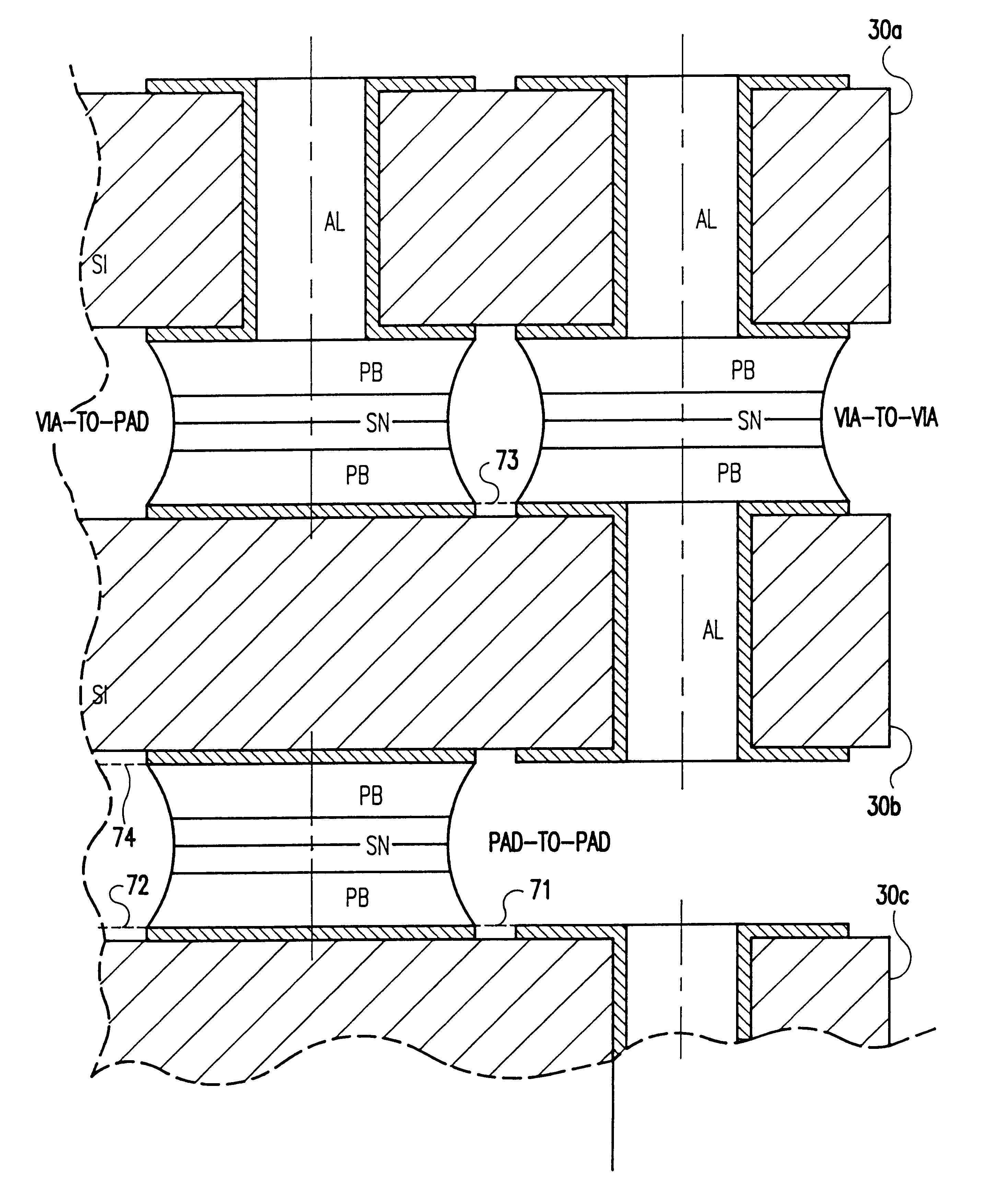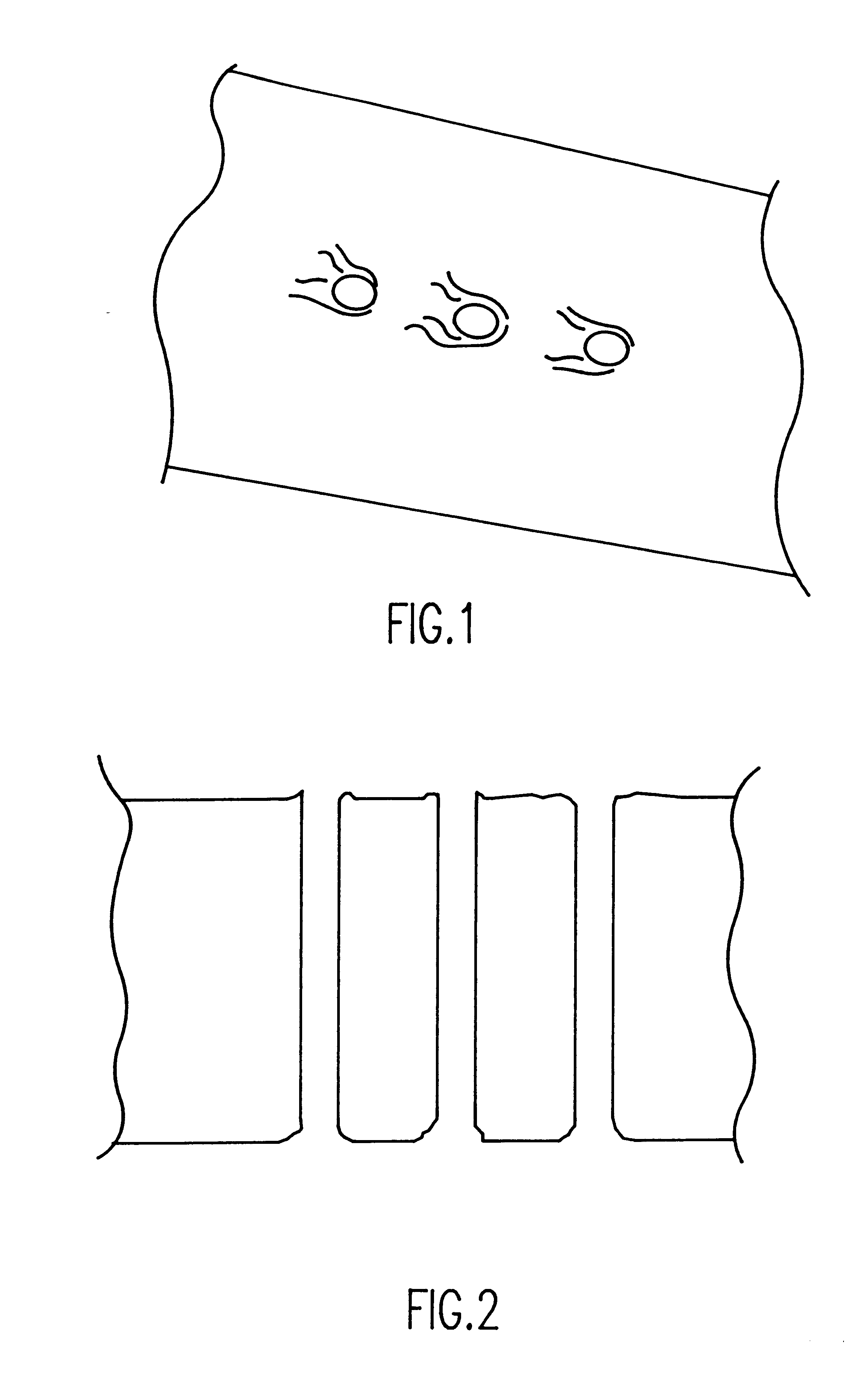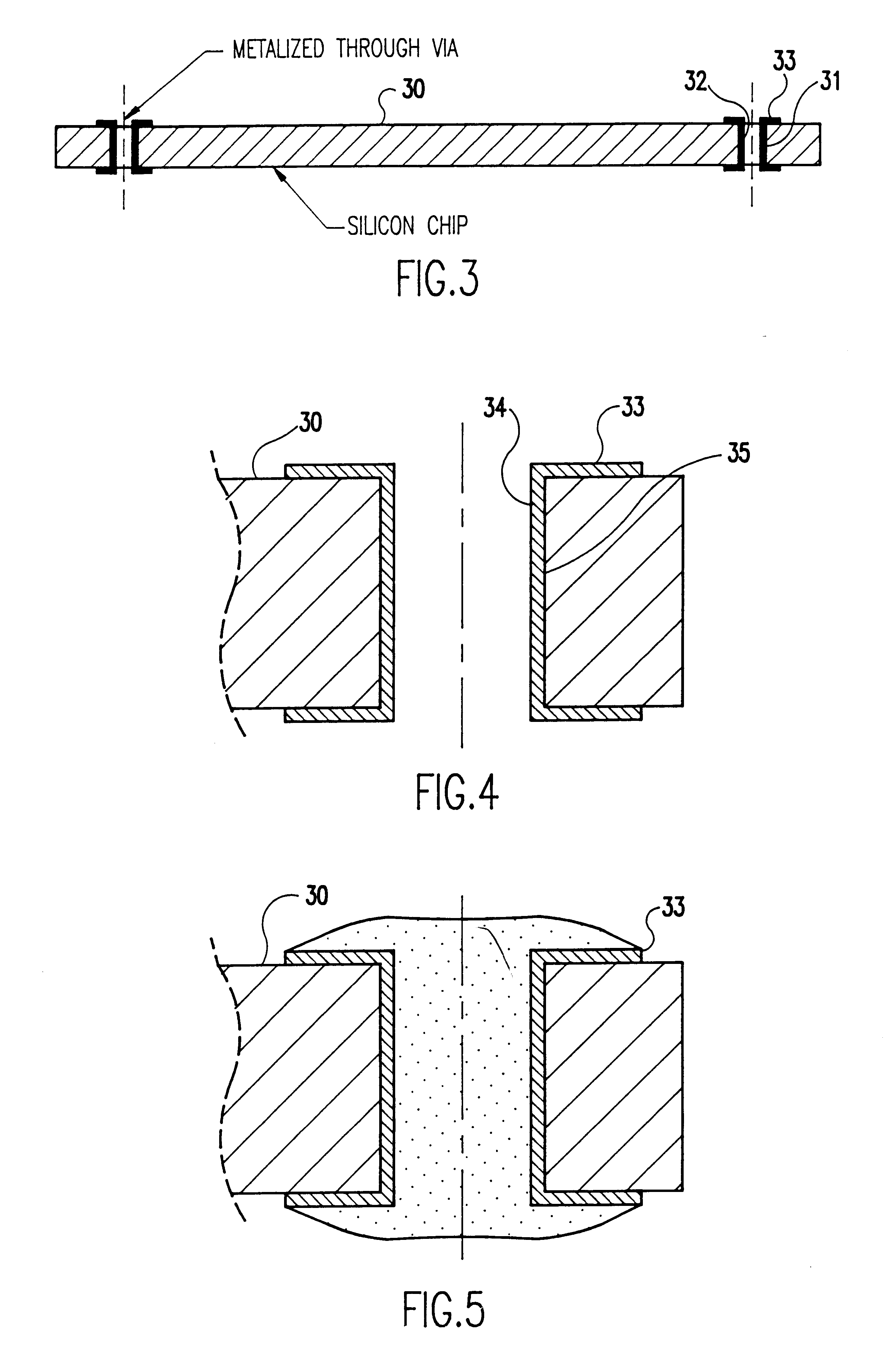High density integrated circuit packaging with chip stacking and via interconnections
a technology of integrated circuits and interconnections, applied in the direction of electrical equipment, semiconductor devices, semiconductor/solid-state device details, etc., can solve the problems of increasing the susceptibility to damage, reducing the manufacturing yield, and limiting the operation speed of digital systems, sub-systems and circuits and elements thereo
- Summary
- Abstract
- Description
- Claims
- Application Information
AI Technical Summary
Benefits of technology
Problems solved by technology
Method used
Image
Examples
Embodiment Construction
Referring now to the drawings, and more particularly to FIG. 1, there is shown a much enlarged image of an array of holes ablated in a silicon chip by use of a laser. Each of these holes has a diameter of approximately 0.003 inches and are preferably achieved by a XeCl excimer laser emitting a wavelength of 308 nm with a pulse width (FWHM) of 25 nsec with a uniform intensity profile developed by use of a beam homogenizer of a commercially available type and the enlarged beam from the beam homogenizer passed through 10.times. reducing optics. Beam fluence of 17-30 J / cm.sup.2 for 20-30 seconds at a pulse rate of approximately 200 pulses per second is suitable for achieving the holes depicted. Alternative techniques such as lithographic patterning and etching could potentially be used either alone or in combination with laser ablation. However, etching is limited to moderate depth to diameter ratios and generally results in some degree of tapering of the holes, resulting in a generally...
PUM
 Login to View More
Login to View More Abstract
Description
Claims
Application Information
 Login to View More
Login to View More - R&D
- Intellectual Property
- Life Sciences
- Materials
- Tech Scout
- Unparalleled Data Quality
- Higher Quality Content
- 60% Fewer Hallucinations
Browse by: Latest US Patents, China's latest patents, Technical Efficacy Thesaurus, Application Domain, Technology Topic, Popular Technical Reports.
© 2025 PatSnap. All rights reserved.Legal|Privacy policy|Modern Slavery Act Transparency Statement|Sitemap|About US| Contact US: help@patsnap.com



